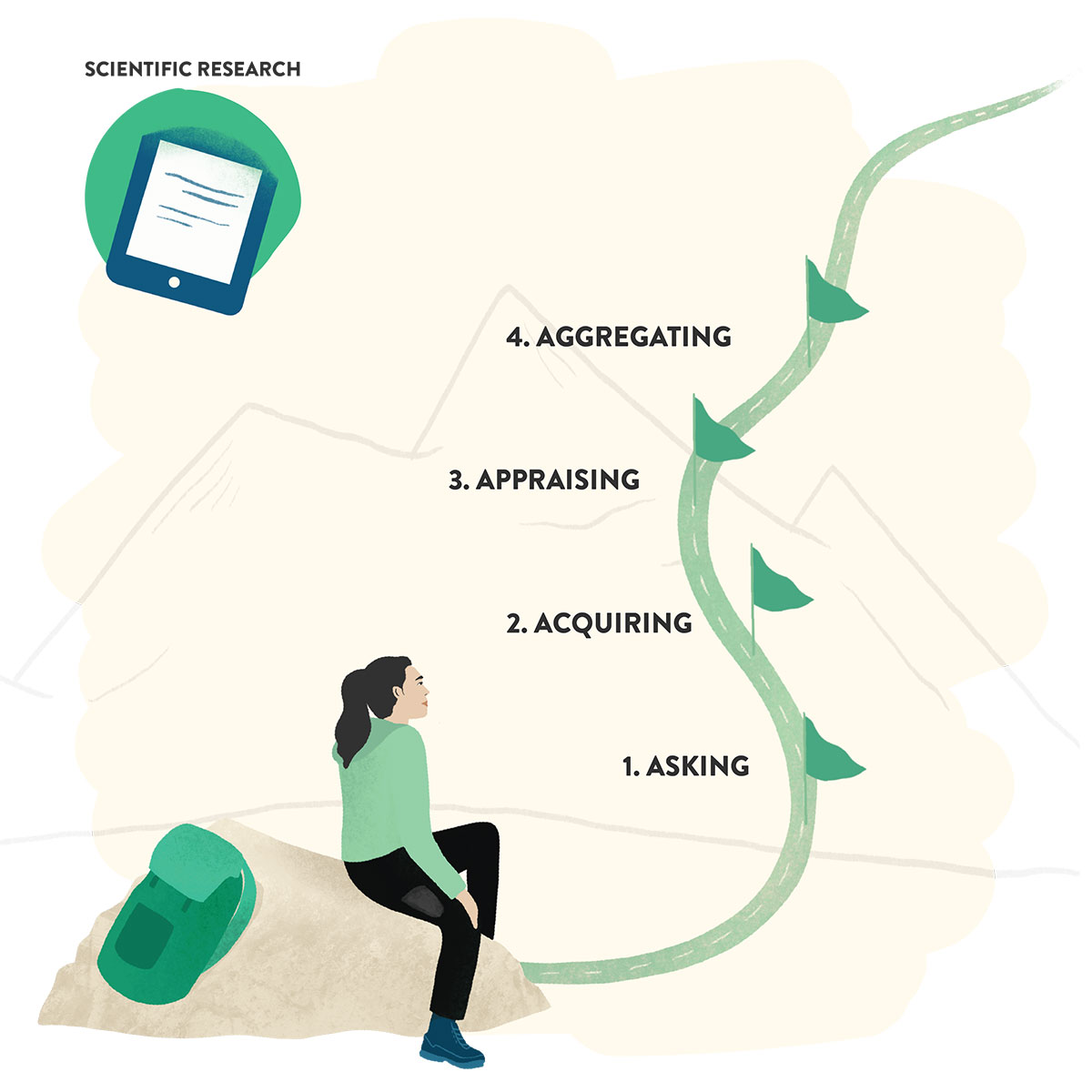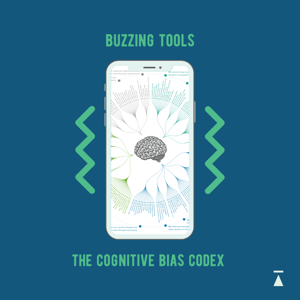#Evidence Based HR #Blogpost
Many good scientific studies exist that can inform HR decisions. If you find and use them, you’re likely to obtain the expected outcomes.
Episode 2: The Evidence-Based HR Backpack – Scientific Research
Amazing research:
How to find it and how to use it in HR
A happy employee is a productive employee, right? Evi, the HR manager of BisonBikes, is convinced this is true. Although it sounds logical, scientific studies show that while job satisfaction is important for employee well-being and other outcomes, it is only weakly related to performance. Evi didn’t know this kind of science exists, let alone where to find it. Are you ready to discover how to find the evidence you need and avoid investing in interventions based on disproven assumptions?
In this article, we offer four easy steps on how to achieve that, together with several free resources to help you. Welcome to the amazing world of evidence-based HR.
But first, let’s make it clear: science isn’t just lab rats and cool laser experiments. It’s a way of thinking that aims to collect information in a systematic way, so that we can explain and predict things that happen around us.
Science isn’t just experimenting in a lab, it’s a way of thinking.
Looking at science is relevant for your HR job

The results of scientific research in the fields of management, organisations and psychology cast light on HR topics such as:
- recruitment methods that can best predict the performance of a new hire
- characteristics of training that make it most likely for people to transfer their new skills to work
- factors that make employees leave
If you work in HR, these topics probably spark your curiosity about the scientific findings around it.
How can you know and use the answer as one of the four sources of evidence in EBHR to make work better? Well, read on.
The first 4 steps in using science in your day-to-day HR decision making
An easy start is to search online for scientific studies instead of opinion pieces. There are also several free resources that make scientific insights more accessible.
As anticipated in our introductory article about EBHR, you can use science throughout the decision-making process of the 6 A’s: asking, acquiring, appraising, aggregating and finally, applying and assessing. In this article, we’ll be focusing on the first 4 A’s, as these are specific to each of the four sources in EBHR:

-

1. Asking: turning a problem into questions
Evi has seen a lot of employees quitting BisonBikes, and she wonders if they’re unhappy with their jobs. Therefore, if she increases their job satisfaction, they’ll probably stay. These are cause-effect statements which require evidence. So Evi must ask herself:
- Is employee turnover an issue within my organisation?
- Does low job satisfaction cause employee turnover?
To answer these questions, Evi has to find scientific research on the problem (employee turnover) or the solution (increase job satisfaction), or look at job satisfaction in similar organisations, to see if BisonBikes is indeed behind.
Evi also checks out if research studies mention job satisfaction as cause of employee turnover, or what else might be at play (e.g. low job autonomy).
When you are in Evi’s position, to make sure you ask the right question, use the ASK Manager App developed by CEBMa (the Center for Evidence-Based Management) and free for iOS and Android phones.
-

2. Acquiring: gathering the scientific studies
Once Evi has a problem-solution statement, she should look again for research studies that explore the link between the two. Researchers publish their work in peer-reviewed journals, where experts treat every new report of a research study with scepticism and then verify it.
To find journals relevant for management and HR, start with two databases: ABI/Inform Global and Business Source Elite. Unfortunately, these are only accessible with a paid subscription usually offered by universities, but signing up as a member of CEBMa will give you access. Otherwise, you can search using Google Scholar, which is free and finds any open-access resources.
Another practical free resource is the website ScienceForWork, where you can find plenty of easy-to-read summaries of qualitative scientific research on HR topics. The initiative is driven by evidence-based HR enthusiasts, who do this on a voluntary basis.
-

3. Appraising: taking a critical look at science
Once Evi has got hold of a few research studies that are relevant to her, it’s time to see if they’re any good.
When appraising a research study, you need some science knowledge to go in depth, but CEBMa has again developed a free tool for this: the CAT Manager App. It asks you a few questions about the study to guide you through its appraisal, resulting in a level of trustworthiness.
Another quick and easy way for Evi to recognize more trustworthy research is to check if it’s a single study or a review of several studies. The first looks at data from only one sample of people, but the second looks at many existent single studies, analysing their data together. Thus, the findings are likely to apply to more diverse people and contexts. Such a review is best when it’s conducted in a systematic way.
-

4. Aggregating: telling a story
Finally, Evi has to sum up the findings about the problem and solution in a narrative report. She mentions how strong the relationship between job satisfaction and employee turnover is. Whether a paragraph or a document, she will share the report with other decision-makers, reference it later, or even reuse it for other decisions.
For Evi’s problem with job satisfaction, research indicates that this is an important cause of employee turnover. However, she has also discovered many other causes of employee turnover, like job characteristics, and she needs to take this into consideration when building a solution.
Other sources of evidence and applying them in practice
Scientific research is a crucial source of evidence, because it is objective and trustworthy. However, evidence from the other three sources – organisational data, professional expertise and stakeholders – is also useful.
Follow our blog to read the next articles on how to find and use evidence from these sources of evidence as well as on the final 2 A’s: how to apply the evidence, and how to assess the outcomes.
For more inspiration and freely available resources, check the websites of our partners CEBMa and ScienceForWork.
Would you like to interact about EBHR and learn together with other people? Then you’re welcome to join our knowledge sharing forum for EBHR-learners on Facebook, and our open workshops. We're also happy to provide a custom session for your organisation, online or offline.
Iulia Cioca
Iulia graduated in Work and Organisational Psychology from the University of Valencia, after an educational journey that started in Romania, and continued through Austria, Italy, and Canada. She has worked in different HR consulting and management roles. As an HR Scientist at Balance HR, Iulia is contributing to bringing Better Work for All by identifying HR practices that really work – based on evidence. In addition, she collaborates on projects in Talent Management, and she is a fellow of CEBMa and a PhD candidate.



